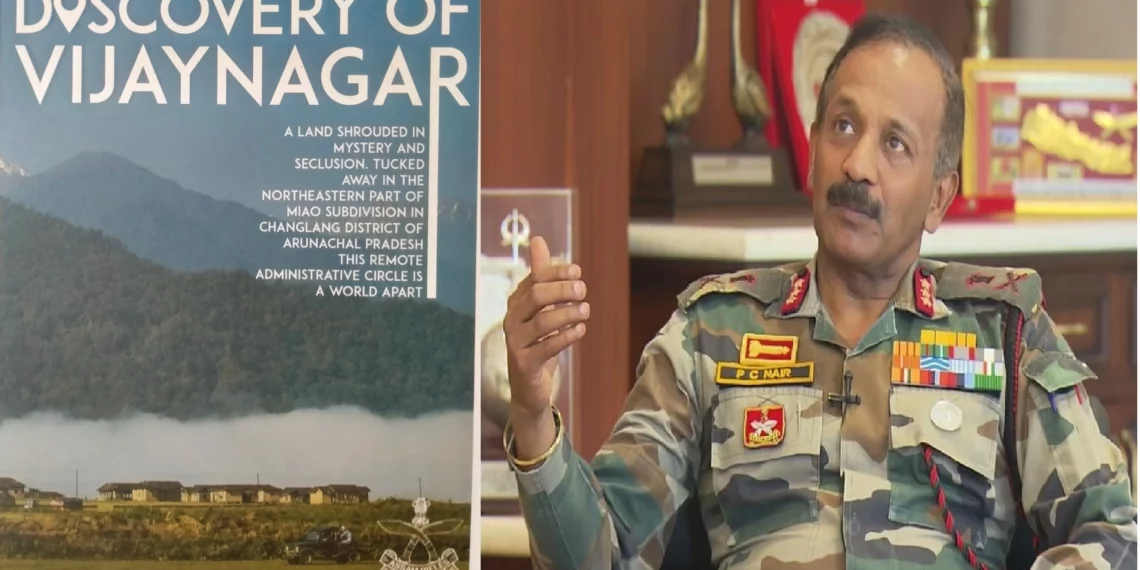Over twenty four years ago, in 1999, when a millennia was about to turn, the late lamented Indian Administrative Service (IAS) officer of the Assam cadre (1979 Batch),Vinay Sheel Oberoi asked me if I knew about Vijaynagar.
Vijaynagar was quintessentially tucked away in the easternmost extremities of India.
It is a place “shrouded in mystery and seclusion”.
“Tucked away in the Northeastern part of Miao Subdivision in Changlang district of Arunachal Pradesh “, Vijaynagar was for those who had even heard about it, Shangri-La.
Few, from even the North East, were aware of this sleepy salient.
Vinay had written the entire script for my TV documentary series “North East Focus” in 1997 and had probably fathomed the idea that—in the late 1990s—the apprentice-ridden mind in me, staggering between a wannabe conflict theorist, author and chronicler was eager to learn more about the innards of the North East.
Muli, as his friends used to affectionately address him as, once asked, “Jaideep, would you like to do a documentary on the first place that the sun would greet India on 1 January 2000?” It was in his Defence Colony house in New Delhi where I was a frequent invitee.
Muli had, I think, been the Joint Secretary (Defence), Government of India in one of the preceding years. But his quest for the lesser known in the North East that he ably served until his sad demise some years ago is unmatched.
In any event, Muli’s query about Vijaynagar remained an intrigue.
It’s only about a year later, in 2001, when I visited the Assam Rifles’ 25 Sector in Lekhapani for a briefing and onward patrolling into the sector’s interiors that I understood the wondrous imperative of the salient.
In any event, Vijaynagar continues to be perched where it is. Tales about the Chinese seeking it out in search of the fabled musk deer and the manner in which it earned its name were heir to only a few.
The Assam Rifles and its intrepid Director General, Lt Gen. P.C. Nair must be congratulated for producing a coffee table book titled “Discovery of Vijaynagar”.
The book lays thread bare the clouded history of Vijaynagar.
Nine smart chapters unfolds the story of the discovery.
It is not unusual for the Indian army or the Assam Rifles to chronicle far-flung places in its Areas of Responsibility.
Indeed, a plethora of books and articles have come to the fore about the unfortunate 1962 border with China. Sundry other officers have sought to pen scholarly works about the region and even about the history of the Assam Rifles.
However, the latest offering by the Assam Rifles on Vijaynagar, mentored by Lt Gen. Pradeep Chandra Nair, is exceptional.
The difference is one of style and approach.
Replete with rare photograph, sketches and maps, the coffee table is a veritable cornucopia of knowledge about a place which most of India does not even know exists.
History of the land and people of Vijaynagar comes alive in the page of this very rare book.
The manner in which Vijaynagar’s existence in India is painted is no less than that of the flourish of a Hussain or even Gauguin.
Readers will not only turn the pages of this wonderful work with eagerness, but would, methinks, make efforts to search out Vijaynagar for themselves.
Lt Gen P.C. Nair, Director General, Assam Rifles and his able team must be complimented for “Discovery of Vijaynagar”.















